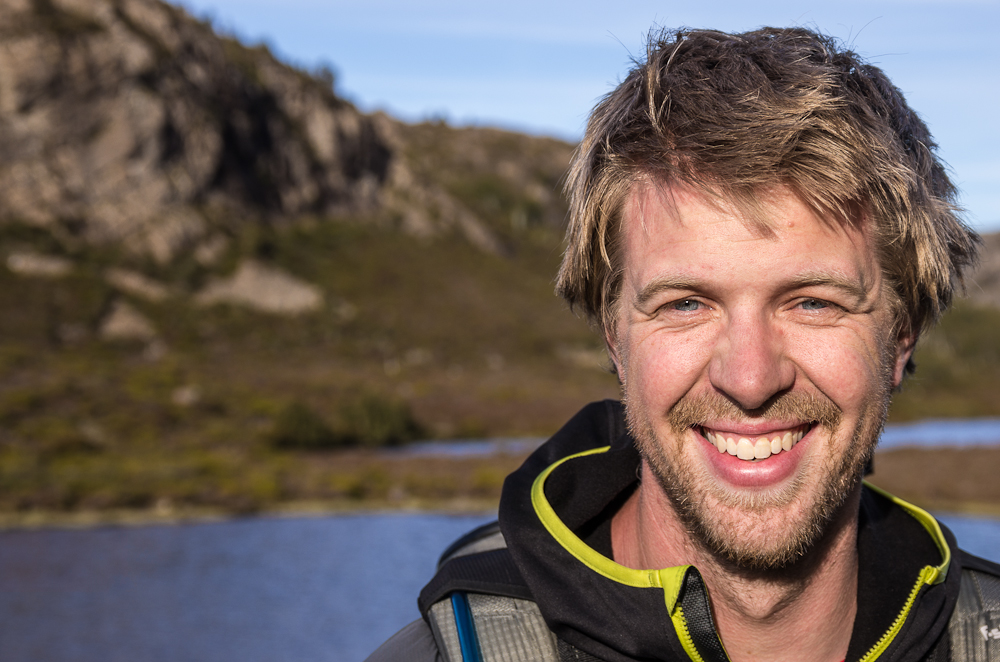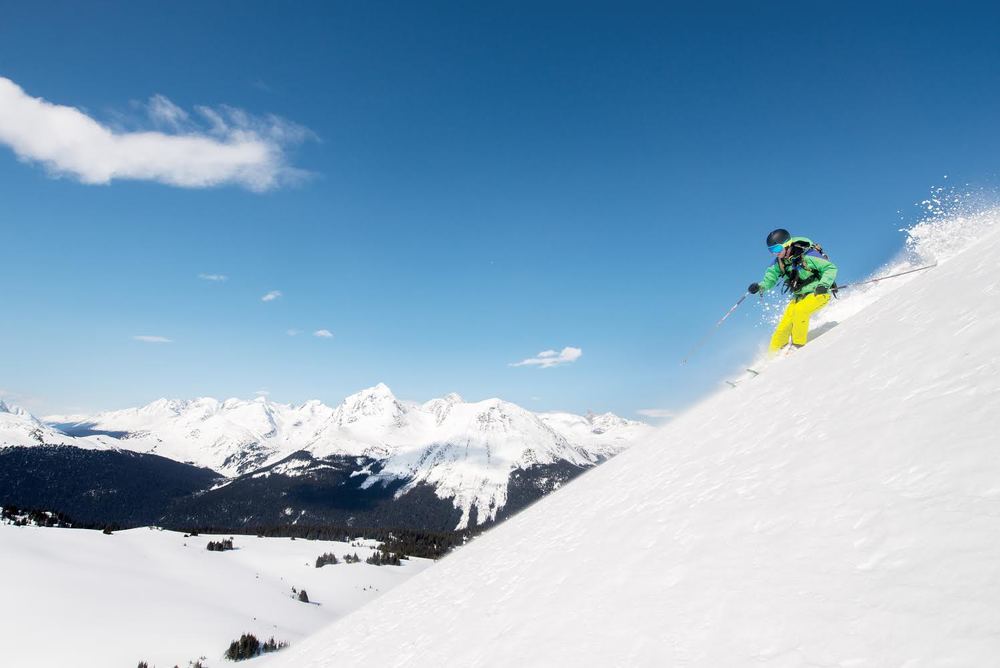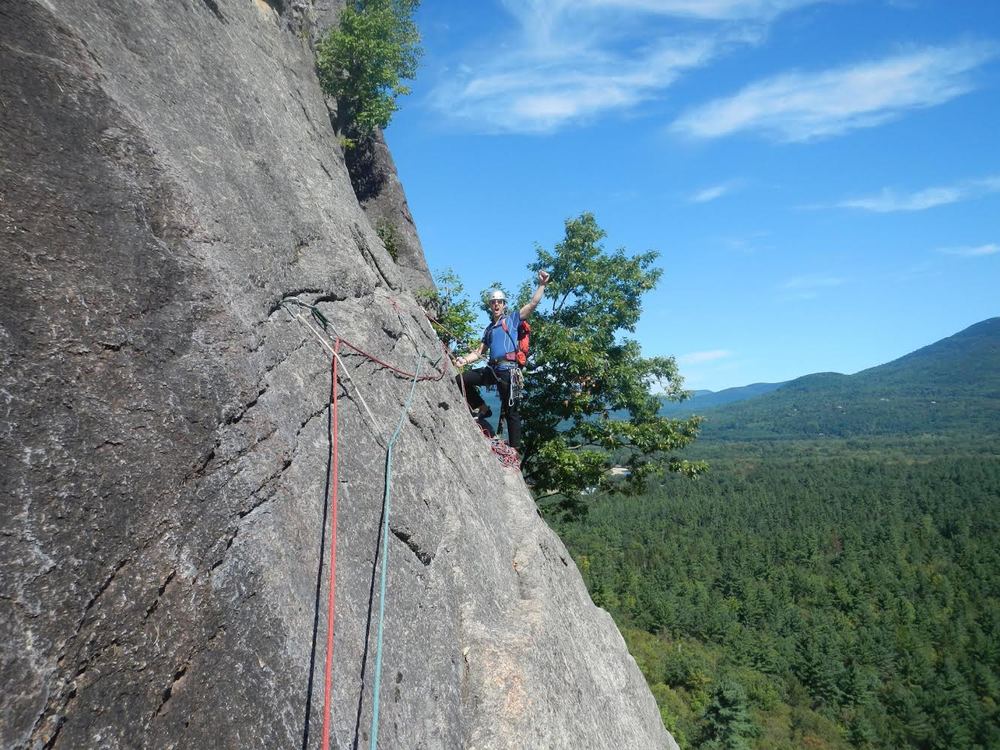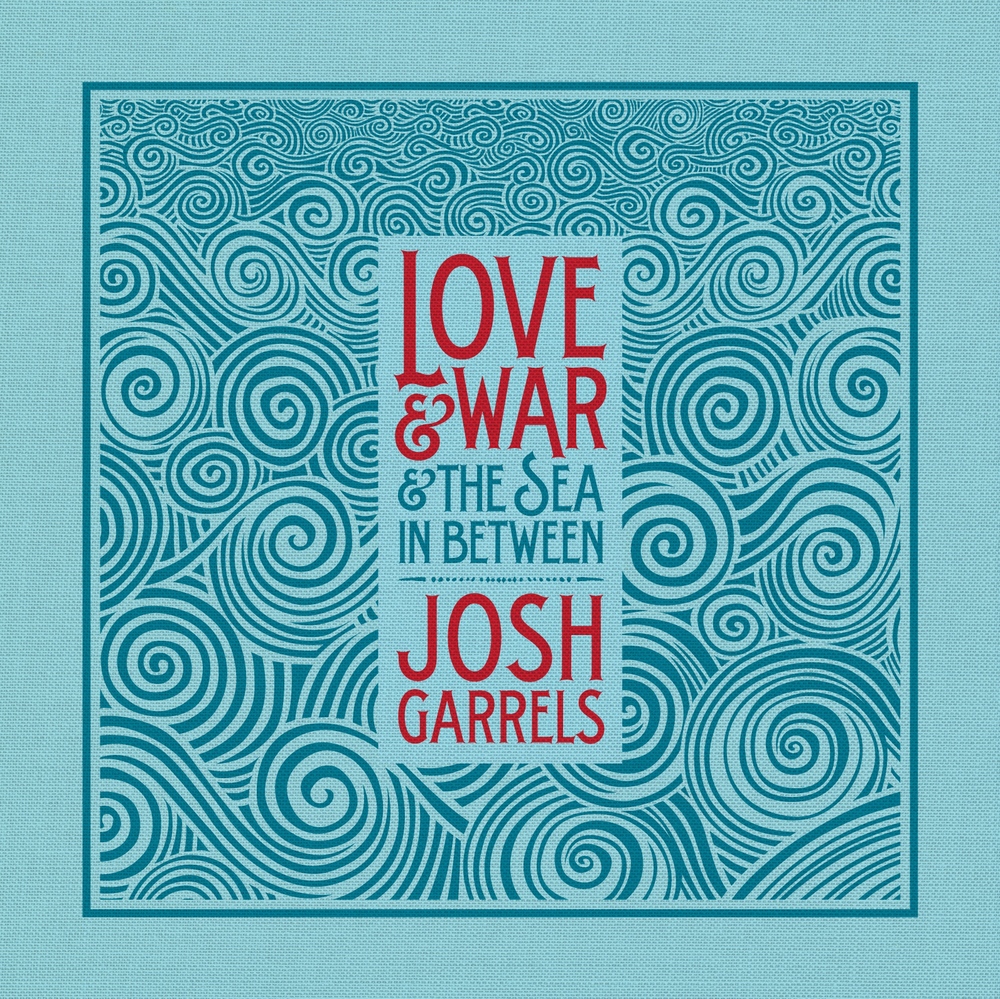
Ben Fullerton has a unique perspective (or rather two perspectives) when it comes to filmmaking. He knows what it’s like to be on both sides of the coin when it comes to the collaboration of music and picture.
As both a musician and filmmaker, Ben has a keen sense of detail when the two mediums come together. His outdoor films are very musical in nature in how they move and flow. Being much like a conductor, Fullerton involves music as a seamless dance partner on screen.
We got a chance to chat with Ben on how he uses his experience in music and film to tell a compelling story.
M: When did you start filming?
BF: Like many people right now, I started out in still photography, and began exploring video production when the whole HDSLR thing came onto the the scene and turned everything on its head. More and more clients were looking for video and photo being produced in conjunction, and it seemed like a natural and smart evolution. Plus, as the Staff Photographer for Backpacker Magazine, I realized how big digital content was becoming in publishing, and wanted to learn the skills I needed to be as big a part of tackling that new frontier as I could.
When I first got interested in photography, a few years before the HDSLR revolution, my wife who works as an editorial Photo Editor, told me that if I was smart, I would get into video not photography. Well, I wasn’t smart and she was right. But at the same time, I think there’s a lot to be said for spending some time with still images– purely focused on composition and light– before getting into the deeper world of moving pictures, continuity, storytelling, video editing and all that. I guess I’m thankful for the path I took, and photography still has a special place in my heart.
M: When did you know you wanted to be a filmmaker?
My first swing at a creative career was in music, and after a lifetime of playing music, I attended the Berklee College of Music as a Drumset Performance major. I let the competitiveness of music school get to me, was practicing way too much for all the wrong reasons, and in my fifth semester, tendinitis swiftly took me out of the game. I spent a few years building, painting and racing custom cars, then got mountain fever and started rock climbing. A desire to share my adventures with friends and family made me pick up a camera and I quickly found myself pursuing a career in adventure photography.
I was very content on that path and it was going well for me, but as soon as HD video essentially snuck its way into my camera bag, I started messing around with it and was instantly hooked. I called up a climbing guide friend of mine and we made plans to film him on a climb. I had absolutely no idea what I was doing and the shoot was an epic failure. I was trying to ascend the wall with a full camera bag and a two tripods, continuity breaks a mile wide, terrible audio, the whole project got left on the cutting room floor because I couldn’t possibly turn it into anything good. And I didn’t really know how to use Final Cut anyways. But it didn’t matter, I was in love. In a completely cheesy way it felt like my whole life was leading to this and suddenly everything made sense. I always loved storytelling, but hated writing; the rhythm, timing, dynamics and accentuation of percussion felt just like editing to me; and the love of visual images all came together in one art form. And then in the most unpredictable way (since films need music), it all led me full circle back to music production.
M: What’s usually your favorite moment when working on a film?
I think all the best shoots and projects have a much higher propensity for failure than we would like to admit (especially to our clients); thats why they’re exciting, and thats why, if they succeed, they usually yield something that viewers latch onto. If you only try what has worked in the past, you’re never going to make something people haven’t seen before. But whether it’s a high concept vision you’re trying to execute, or you’re waiting for the golden hour to show up in a big way, or hoping the interview will be as emotionally moving as you think it will be, or just hoping an athlete can pull off something sick; there’s always a moment when you realize it’s happening. It’s all coming together, just like you dreamed it would. I love that moment, it’s like a drug.
M: How and why did Caveman Collective come into being?
As I learned with my first attempt at a rock climbing video, it often takes more than one person to pull off something great, especially in filmmaking. For some reason, photography has always been a bit of a lone wolf sort of thing, but delving into filmmaking, I immediately saw the value of collaboration. For a few years I was looking and waiting for the right group of people to partner up with. Meanwhile, Andrew Bydlon, who I also work with at Backpacker Magazine had been starting this thing called Caveman Collective on the side. Andrew and I already knew we worked really well together and had a lot of respect for each other’s work; and he was already partnered up with another talented shooter, Bligh Gillies, so it was basically exactly what I was looking for. It took me a little while to get over a bit of an ego hang up about wanting to be the one who started something, but when I did, I realized that the answer had been staring me right in the face. Andrew and I had a few talks with Bligh, and it turned out that the interest was mutual and well timed with a website redesign already in progress. So I jumped on board, didn’t sleep much for a few weeks and we launched the Caveman Collective as it now stands.
M: What’s been your favorite unexpected moment when filming?
I was working on a short rock climbing film for Climbing Magazine with pro climber Pamela Pack, who specializes in a particularly masochistic style of climbing called Off Width— cracks that are too wide to effectively wedge your hand and feet into, but too narrow to squeeze your whole body in. She was working on a route in Vedauwoo, WY that was at the upper limit of what she (or anyone) could do, and it was so physically demanding for her that she could really only try it once and then she would be wrecked for the next few days.
We had hiked all the way up to it, rigged the static line for me to shoot from, my assistant was back on a hill with a locked down telephoto shot, and she had gotten into position. Once she begins the route, it’s pretty time consuming for her to get back off it and get the gear back if she doesn’t complete it, plus the time to de-rig the shooting line. So when we saw some pretty gnarly looking storms clouds coming in. we figured we were hosed and were better off just pulling our stuff down now and leaving, rather than committing ourselves to at least an hour on the wall with lightning on the way.
We stared at the clouds for a while, wishing they didn’t mean what we all knew they meant. But for someone reason, both of our guts were saying, ” Go for it”, so we did. Cameras started rolling and she started climbing, and the clouds started breaking up. Warm light started peaking out from underneath the clouds, and she was climbing smooth and strong. And just like that moment I was talking about above, I just somehow knew that this was the time it was going to happen. And it did. She completed the route in great style and in great light.
M: How do you feel music plays a role in filmmaking?
The thing I love most about filmmaking is how symbiotic it is. It’s this beautiful combination of so many individual arts: acting, choreography, writing, cinematography, lighting design, sound recording, music production, and they’re all of vital importance. Filmmaking is like a sandwich— there are all these different parts, and every bite you take, you get all of them. If one of them is awful, and it doesn’t matter which one, the whole sandwich is bad. Unfortunately, when budgets or time get short, music is often the first thing to get overlooked, and the whole project suffers.
Maybe I’m just a music lover, but I think music is one of hardest things to tolerate when it’s no good. A great piece of music can turn a rather bland edit into an emotional roller coaster, and a generic piece of music can turn gorgeous cinematography into a snoozeathon. In my opinion, music is the most powerful element when it comes to establishing the mood, energy and emotional feeling of a film. So much effort often goes into crafting a script, lighting and shooting a scene, getting the blocking and acting just right for the vision; but all that can go right out the window if the music isn’t right. I think getting the music right should be very close to the top of the list when it comes to allocating time and budget, especially for independent filmmakers and smaller budget projects.
M: When do you know that you’ve found the right soundtrack to a project?
When I first got into filmmaking, there was nothing like Marmoset, and it seemed a lot like there were really good options, wrapped up in conventional recording contracts, available for a ton of money, and really bad options available for cheap; but there was this giant gap in the middle of high quality music, intended for film, that was within reach of smaller budget projects. And being a musician, I could never be ok with bad music in a project. So that drove me to set up my drums, dust off my axe, learn Logic and start making my own music.
Being involved in shooting, editing and music for some projects, it can definitely all become a big jumbled mess in my head. Sometimes it feels like the cart is leading the horse, and for personal projects especially, I often find myself making a video based on a musical idea, not the other way around. We just finished shooting a project with an athlete friend of mine, who is a boss on a slackline. The sound of a highline in the wind, had inspired a musical idea, and I started writing a song around it. Then I found that dictated the pacing, mood and style for how I wanted to shoot the piece, and now were working on crafting a VO narrative that fits the direction the edit is going, which is almost completely backwards to how a film would normally be made.
But no matter what, it all comes down to feeling and blend. All of art to me is about successfully communicating a certain feeling from one person to another, and properly blending together all the various elements to make that happen. Whether shooting a film inspired by a musical idea, or when looking for music for an existing project, those two things should be in the front of your mind. Does it create the proper feeling? And does it blend well with everything else that is going on?

M: How do you feel music can be misused in film?
As I’ve already said, I think poor music choices can have one of the biggest negative impacts on the overall experience of a film; and I think music choices can be poorly made in two mains ways. The first is that the music just flat out isn’t very good. There’s a lot of cheap royalty free music out there, but for the most part it’s made with some pretty poor sounding MIDI samples or with some really generic rock music sounds. It’s uninspired and sounds just like its price— cheap. To someone who has studied music, those things immediately jump out; but for most people, even if they don’t consciously realize it, I think they feel it, and it just sucks a huge amount of the impact out of your film.
The second way music can be poorly chosen is with an emotional mismatch, both from an overall sense and in terms of the way it builds and progresses. You can spend all the time you want with the script, composition, light, pacing and the edit trying to establish a certain feeling; but if the music doesn’t support that feeling, or even worse, counteracts it, you’ll never get the feeling you were hoping for. So sometimes there’s music choices where to me it feels like the film and the music are trying to be two different things. But in other cases, I think the style of music can be appropriate, but the way it builds doesn’t match the flow of the film. Nothing helps facilitate emotional climaxes or dramatic builds better than the right piece of music. A little while back I saw a short piece that in many senses was very good– the characters, cinematography, and editing were all fantastic. But a few minutes in, the piece was obviously trying to build to a pinnacle moment, and the music just wasn’t having it. Instead of supporting the drama and pushing it forwards, the music was acting like an anchor. It was holding the film back and preventing me from feeling anything more than I had a minute before.

M: What’s next?
The past few months have been really exciting (and tiring), like that moment on a 1000-piece puzzle, when some pieces start falling into place and you finally feel like you’re making some progress; so there are a number of possibilities on the horizon that I’m pretty stoked about. But there’s one in particular that has been occupying a lot of my time, energy and creative fire. I have a friend named Sam who has been living on the road, out of a tiny Ford Festiva, for the last 5 years; and he’s basically the coolest person I know. He’s rock-climbing, mountain-biking, kite-surfing, slacklining, world-traveling, AcroYoga all-star, and somehow he scored himself a cool, cute and equally badass girlfriend to join the travels. We has started a film about his life on the road a few years ago, but the timing wasn’t right. Now it is. And using the footage we had started producing, a ton of footage from their adventures on the road, and some new stuff we’ve been working on together, in collaboration with Wanderlust Festivals, we’ve been weaving together what I think is a really interesting and unique story about what happens when you give up the idea of home, follow your passions and live a life in the moment. I’m directing and editing the film, and have also been writing a bunch of new music for it. I’m really excited with where it’s going and we’ll be launching a Kickstarter campaign for it soon to help fund some of the final production and the post production, so I guess we’ll find out if everyone thinks Sam’s story is as interesting as I do!
Here check out their Kickstarter campaign HERE and support the cause.

What is your favorite place to film? When has a physical place inspired a story for you? Tweet, message and email your stories. We’ll choose our favorite next week and send the winner a SIGNED out-of-print book-bound copy of Josh Garrels’ The Sea In Between.
